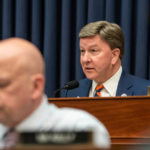
The Marine Corps’ top official said Tuesday the House and Senate Armed Services Committee’s support for funding one San Antonio-class PPD-17 Flight II amphibious transport dock ship, LPD-33, in their respective versions of the next defense policy bill sends a “powerful signal” as congressional appropriators work through FY ‘24 spending bills. “What I understand from both sides, both chambers, both parties, they all recognize the nation needs amphibious ships to protect its interests overseas. But we’ll see where they go…

 By
By 











